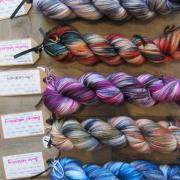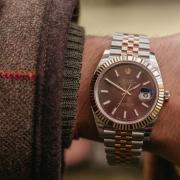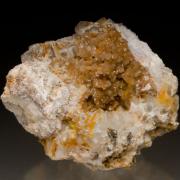Buying a diamond? For an item of such importance, there is a set of international standards to determine which are the finest
Diamonds were formed from pure carbon that crystallized under immense pressure at very high temperatures some three billion years ago to create a rock much harder and more indestructible than any other. Formed where the earth’s crust is at its thickest they were brought nearer to the surface by volcanic eruptions. The first known finds date back to 9th century southern India and it wasn’t until the early 18th century that diamonds were also found in Brazil, followed by South Africa at the end of the 19th century and in various other countries since.
Throughout history diamonds have been regarded as magical; the ancient people of India thought they held ‘a fragment of eternity’ and the Romans considered them ‘the most precious material in the whole world’. When in the 15th century the ‘brilliant’ cut was perfected – then 36 facets – the stone’s true beauty was fully revealed.
Diamonds are no longer the preserve of princes and the very rich but their appeal is enduring and the gift of a diamond carries a depth of sentimental meaning whatever its value. With an item of such importance, a set of well-defined international standards has been created to determine which are the finest. The list below is taken from the Antwerp Private Diamond Club’s eight-point quality criteria:
1 Shape or cut
The round shape diamond or ‘brilliant’ is by far the most popular, both for diamond jewellery and as a loose diamond purchased as an investment. It is also the most expensive and with (nowadays) 57 facets, it returns the most light. For almost 100 years diamond cutters have been using advanced theories of light behaviour and precise mathematical calculations to balance cut, colour and clarity to optimise the fire and brilliance of a round diamond. Other cuts, known as ‘fantasy’ cuts, are usually less expensive and include pear shape, marquise, heart, cushion, oval, emerald cut, princess cut, etc...
2 Weight or carat
The weight of a diamond is expressed in carats. The word carat originated from the carob tree whose tiny seeds, which were known for their uniformity and consistent weight, were weighed against diamonds and other precious stones. The system was eventually standardised and one carat was fixed at 20 grams. A carat is divided into 100 points, eg. a diamond that weighs a quarter of a carat can also be described as 25 points or 0.25 carat. For a diamond above one carat, points are generally no longer mentioned. The price per carat varies according to the weight of the stone, i.e. the price of a two-carat stone is higher than that of two stones of one carat each. Two diamonds of the same weight may appear to be different sizes depending on how they have been cut. A larger carat weight doesn’t necessarily mean the diamond is more valuable – colour, clarity, symmetry, proportions, finish and degree of fluorescence must also be taken into account.
3 Colour
Diamonds reflect light and break it into a rainbow of colours, this reflection has no effect on the technical evaluation of colour. Chemical impurities and/or structural defects of the carbon crystal affect the colour of a diamond but most diamonds are white, transparent or translucent and are graded as follows: D: Exceptional White + (rare); E: Exceptional White; F: Extra White +; G: Extra White; H: White; I–J: Nuanced White; K–L: Slightly tinted; M–Z: Tinted. Colourless diamonds are the most popular but there are also coloured or ‘Fancy’ diamonds which are the most expensive because they are extremely rare. While a faint yellow hue (ranging from I to Z) can lower the value of a diamond, naturally coloured diamonds can reach very high prices with the highest commanded by the most intensely coloured stones. Diamonds exist in all colours, with red the most rare. Because they are coloured (and not slightly tinted) they are not classified by letter but by the name of the colour and its intensity. There is a table for every colour with gradings such as Fancy Yellow or Fancy Vivid Yellow.
4 Clarity
The purity or clarity of a diamond is affected by the quantity, size, shape, colour and location of any inclusions (internal defects such as tiny cracks or crystals of some other material) visible with the naked eye or a magnifying glass. Systems have been developed to grade clarity based on inclusions which are visible to a trained professional when viewed under 10x magnification. Grading is: FL: Perfectly pure; IF = LC (Loupe Clean) Internally flawless with a total lack of inclusions when examined under a x10 magnification but small surface blemishes; VVS1 and VVS2: Very Very Slight inclusions, hardly visible with x10; VS1 and VS2: Very small inclusions, almost invisible; SI1 and SI2, Slight inclusions just visible; P1, P2 and P3: Large and/or numerous inclusion(s) visible with the naked eye. Very high purity levels do not increase the visible beauty of a diamond, but do affect rarity and therefore price.
5 The proportions
To reflect and diffract the optimal amount of light, each diamond’s shape needs to conform to specific characteristics of the proportions between its different facets. When a diamond is well-cut, light enters through the large, flat top facet (the table) and travels to the pavilion (the lower portion of the diamond or base) where it reflects from one side to the other before reflecting back out of the diamond through the table and to the observer’s eye. This light is the brilliance and it’s this flashing effect that makes diamonds so mesmerizing. In a poorly cut diamond, the light that enters through the table reaches the facets and then ‘leaks’ out from the sides or bottom of the diamond rather than reflecting back to the eye. Less light reflected back means less brilliance.
6 The symmetry
Similarly, the dimensions of facets and the angles formed between them need to be perfectly balanced to give the stone its maximum brightness. A diamond cut with very good or excellent symmetry has uniformly cut facets, also cut to the perfect depth.
7 The finish
For a perfect finish or polish there should be no imperfections on the surface texture, nothing to get in the way of the transmission of light. ‘Very Good’ or ‘Excellent’ Polish is usually the top cut grade.
8 The degree of fluorescence
Most uncoloured diamonds glow when exposed to ultraviolet light. This is called fluorescence and shows the amount of absorption of UV light. It isn’t linked to the diamond’s colour. Diamonds without any fluorescence are the rarest.
The Antwerp Private Diamond Club, which has compiled this listing and sells only high category diamonds, recommends that before buying a loose diamond or a diamond jewel customers should ask to see a copy of the Certificate of Authenticity and study the eight criteria. If, for example, a diamond of 1.20 carat E VVSI has Proportions, Symmetry and a Finish that is good, average or bad and strong Fluorescence, it can be worth up to 60% less than a diamond of 1.20 carat E VVS1 with all criteria either Excellent or Very Good and No Fluorescence.
For full details view www.private-diamond-club.com



























